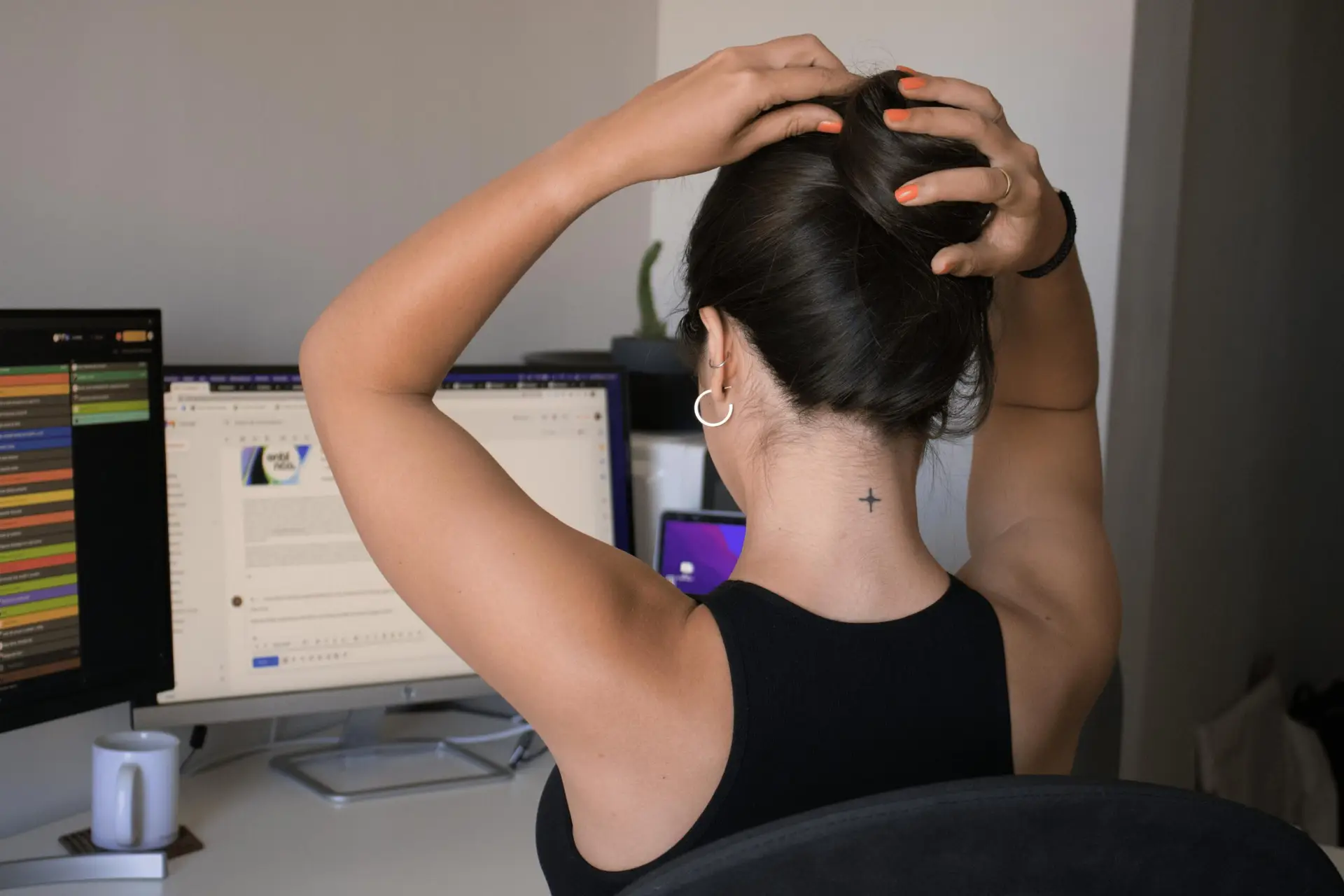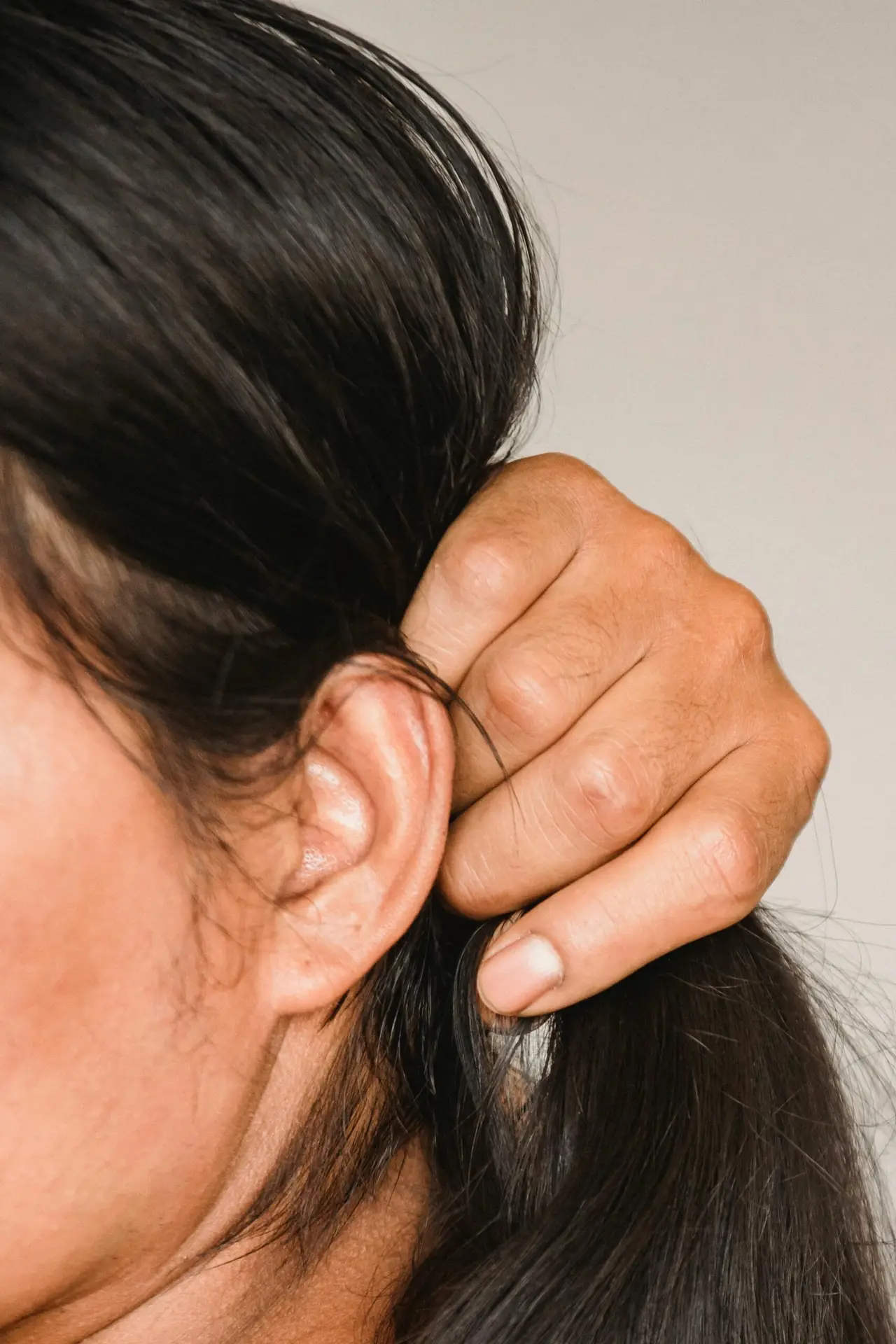
Occipital Neuralgia
Occipital Neuralgia: Living with pain at the base of your skull that zings up the back of your head or behind your eyes can make even simple tasks feel heavy. If you’ve been told your pain is “just headaches,” or you rotate between medications, injections, and short-lived relief, there’s a good chance you’re dealing with occipital neuralgia—an irritation of the nerves that travel from the upper neck to the scalp. Here’s the hopeful part: for many people, the true driver is a mechanical and neurological problem in the upper cervical spine (the atlas and axis). Correcting that problem can calm the nerves, reduce inflammation, and restore normal function—often with life-changing results.
At Lavender Family Chiropractic in Sarasota, Florida, our doctors focus exclusively on upper cervical chiropractic. Using 3D CBCT imaging and Tytron functional nervous system scans, we create gentle, precise corrections—no twisting, popping, or cracking—to restore alignment and help your nervous system finally settle. If you’ve been searching for a chiropractor Sarasota Florida, chiropractor near me, or specifically an upper cervical chiropractor near me with experience in complex head and neck issues, you’re in the right place.
What Is Occipital Neuralgia? A Plain-English Guide
Occipital neuralgia (ON) occurs when one or more of the occipital nerves—most often the greater occipital nerve and lesser occipital nerve—become irritated, compressed, or inflamed. These nerves originate in the upper neck and supply sensation to the back of the head and scalp. When irritated, they can misfire like a frayed wire, sending sharp, stabbing, electric, or throbbing pain up and around the skull.
Because these nerves communicate with other cranial nerve pathways (notably the trigeminal system), ON can overlap with migraines, facial pain, jaw/TMJ symptoms, and even eye pressure. That’s one reason it’s frequently misdiagnosed as “just migraines” or “tension headaches.”
Common Symptoms of Occipital Neuralgia
While every case is unique, people with ON often report a recognizable cluster of symptoms:
- Sharp, shooting, or electric pain starting at the base of the skull (suboccipital area) and radiating upward
- Tenderness to touch at the back of the head, along the ridge under the skull, or behind the ears
- Pain behind one eye or both, sometimes with a “pressure” sensation
- Scalp sensitivity—brushing hair, wearing hats, or lying on a pillow can trigger pain
- Neck stiffness and limited rotation/extension
- Light or sound sensitivity during flares
- Triggers with posture (computer work, driving, phone use), stress, or poor sleep position
- Sometimes dizziness, ear pressure, jaw tightness, or facial tingling, due to shared nerve pathways
If your pain is aggravated by neck position, touch over the suboccipital area, or long periods of sitting, ON is especially likely.
Why the Upper Cervical Spine Matters So Much
The upper cervical spine (C1 atlas and C2 axis) is the neurological “crossroads” beneath your skull. It houses and protects the brainstem and anchors dense networks of muscles, fascia, arteries/veins, and nerves. Two key realities make this region uniquely important:
- It’s built for motion, not brute stability. Unlike the rest of the spine, C1 and C2 have no intervertebral discs and rely more on soft tissues for stability. Even millimeter-level misalignments can create abnormal tension, alter joint mechanics, and irritate neural structures.
- It’s neurologically rich. Proprioceptive signals from the upper neck heavily influence muscle tone, posture, balance, eye movement, and pain processing. Disturbances here can amplify pain and set the stage for occipital nerve irritation and central sensitization.
When the atlas is misaligned, the suboccipital muscles (tiny but powerful) often guard and tighten. That chronic tension can compress the occipital nerves as they pass through the muscle and fascial layers—leading to the hallmark “electric” pain and scalp tenderness of ON. Additionally, altered upper neck mechanics can distort blood and cerebrospinal fluid (CSF) dynamics, contributing to head pressure or brain fog.
Common Root Causes and Contributing Factors
Occipital neuralgia frequently develops from a stack of mechanical and lifestyle inputs—some obvious, others subtle:
- Whiplash or past auto accidents (even “minor” fender-benders)
- Sports impacts or falls
- Forward-head posture and desk/phone ergonomics
- Chronic jaw clenching (bruxism) or TMJ dysfunction
- Post-surgical scar tension or prior head/neck procedures
- Arthritis/degeneration that alters joint mechanics
- Stress and sleep position, especially stomach sleeping or multiple pillows
- Shoulder girdle tightness and rounded posture that overload the upper neck
If you’ve tried medications, nerve blocks, or general chiropractic without lasting relief, the missing piece may be an unresolved upper cervical misalignment that keeps the nerve “on edge.”
Occipital Neuralgia vs. Migraine: How to Tell the Difference
These conditions can overlap, but a few distinctions help:
- Pain quality: ON is often sharp/electric, migraine is often throbbing/pulsing
- Location: ON starts at the base of the skull and travels upward; migraine often centers around temples/behind the eye
- Touch sensitivity: ON frequently worsens with palpation over the suboccipitals or with hair brushing
- Neck movement: ON flares with neck rotation/extension; migraine may be less movement-dependent
- Associated signs: Migraine may include aura, nausea, or visual changes; ON may feature scalp allodynia and local trigger points
It’s also possible to have both—especially when upper cervical dysfunction sensitizes multiple cranial pathways. The good news: correcting atlas/axis mechanics can reduce the frequency and intensity of both ON and migraine-like episodes.
How Upper Cervical Chiropractic Helps—Gently, Precisely, and Predictably
At Lavender Family Chiropractic, our approach is different from traditional “full-spine” chiropractic. We focus on measuring and correcting the exact alignment of your atlas and axis so your body can self-correct downstream. Here’s what that looks like:
1) Advanced 3D CBCT Imaging
We capture 3D cone-beam CT images of your upper neck to see minute misalignments in three planes. This view is far more detailed than standard X-rays and allows us to map a custom correction vector specific to your anatomy.
2) Functional Nervous System Scans (Tytron)
Our Tytron infrared paraspinal thermography identifies heat asymmetries along the spine—non-invasive markers of autonomic imbalance and neuro-inflammation. In ON cases, we often see reproducible patterns in the upper cervical area. These scans also help us track healing objectively over time.
3) Gentle, Atlas-Focused Adjustments (No Twisting, Popping, or Cracking)
Using the data from CBCT, your doctor delivers a precise, low-force correction to the atlas or axis. Most patients are surprised by how light the adjustment feels—and how much freer and clearer their head and neck feel afterward. Our goal is not to “move everything,” but to restore one vital relationship so your body can do the rest.
4) “Hold Is Healing” Philosophy
Upper cervical care values stability. We don’t want to keep re-adjusting you; we want you to hold your alignment longer and longer. As the nervous system calms and soft tissues remodel, symptoms fade, and flare-ups become less frequent and less intense.
What Healing Looks Like (Typical Phases)
While timelines vary, most people move through these stages:
- Relief Phase (first weeks): Pain intensity and frequency begin to drop. Neck motion improves. Sleep gets easier.
- Stabilization Phase (weeks 4–12): Adjustments become less frequent as you hold alignment longer. Scalp tenderness fades. Flares shorten.
- Resilience Phase (months 3+): We transition to periodic checks. Patients report confidence—they know how to support their neck, recognize early warning signs, and stay ahead of triggers.
We re-evaluate with Tytron scans regularly and schedule follow-up imaging when indicated to verify objective progress.
Supportive Strategies That Complement Your Adjustments
Upper cervical corrections do the heavy lifting. These simple habits help you hold alignment and reduce nerve irritation day-to-day:
- Sleep setup: Back sleeping with a low-profile pillow that supports the neck curve (not propping the head forward). Avoid stomach sleeping.
- Micro-breaks: Every 30–45 minutes, reset posture: chin nod, shoulder roll, 3 slow nasal breaths.
- Desk ergonomics: Screen at eye level, elbows near 90°, feet flat. Bring the screen to you.
- Gentle mobility: Upper thoracic extension over a towel roll, scapular retraction drills. Avoid aggressive neck self-manipulation.
- Stress downshifts: 5-minute breath breaks (4-second inhale, 6-second exhale) calm sympathetic overdrive that fuels pain.
- Hydration and routine movement: Small walks throughout the day keep tissues oxygenated and reduce guarding.
- Jaw care (if clenching): Tongue on the palate (“N” sound), lips together, teeth slightly apart. Discuss night-guard options with a dental professional if needed.
(General information only; not medical advice. Always follow your doctor’s guidance.)
Real-World Wins: What Patients Often Report
- “The stabbing pain isn’t daily anymore.”
- “I can brush my hair and sleep on a pillow again.”
- “Turning my head to check blind spots doesn’t set it off.”
- “I’m not living around my flares.”
- “My ‘migraines’ were actually ON—now they’re rare and milder.”
Many people find us after exhausting other options. When we correct the root mechanical and neurological problem, the body finally has the chance to heal.
When to Seek Additional Evaluation (Red Flags)
Occipital neuralgia is pain-dominant, not weakness-dominant. If you experience sudden severe headache (“worst of life”), facial droop, speech changes, double vision, new arm/leg weakness, or new numbness, seek emergency care right away. We collaborate with medical providers and will refer appropriately when your presentation indicates the need.
Why Choose Lavender Family Chiropractic in Sarasota
- Exclusive focus on upper cervical chiropractic
- 3D CBCT imaging for sub-millimeter insights
- Tytron thermal scans to track your nervous system’s progress
- Gentle, precise adjustments—no twisting/popping
- Team-based care with Dr. Rusty Lavender, Dr. Jacob Temple, and Dr. Will Guzinski
- Encouraging, education-forward environment—we teach you how to hold your progress
- Serving Sarasota, Bradenton, Lakewood Ranch, Parrish, Ellenton, Venice, Osprey, Punta Gorda, St. Petersburg, Siesta Key, Longboat Key, Lido Key, and Myakka City
If you’ve been searching for a chiropractor near me, a migraine doctor near me, or a vertigo doctor near me who understands the upper cervical connection, you’ll feel at home here.
What to Expect at Your First Visit
- Consultation & History: We listen. Triggers, patterns, past injuries, and what you’ve already tried all matter.
- Neuro-Orthopedic Testing: Gentle, targeted exams to reproduce/relieve your symptoms and rule out red flags.
- Tytron Scan: Objective baseline of autonomic balance.
- 3D CBCT Imaging: If indicated, we capture precise images of C1/C2 to map your custom correction.
- Report of Findings: We show you what we found and explain your tailored plan—clear, simple, actionable.
- First Correction: If appropriate, we deliver your first gentle adjustment and re-check your scans.
- Home Support Plan: Small, high-impact habits to help you hold the correction and feel better, faster.
Insurance, Scheduling, and Practical Details
Our office is out of network with insurance. Many of our patients receive a superbill to submit to their insurance for reimbursement based on their coverage. We offer many different payment options as well as finance options. If you’re comparing options and value long-term, root-cause results, you’ll appreciate the precision and efficiency of upper cervical care.
Top 15 FAQs About Occipital Neuralgia and Upper Cervical Chiropractic
1) What exactly is occipital neuralgia?
Irritation or inflammation of the occipital nerves that supply the scalp, typically causing sharp or electric pain from the upper neck to the back/top of the head.
2) How does upper cervical misalignment cause ON?
An atlas/axis misalignment can tighten suboccipital muscles and alter joint mechanics, mechanically irritating the nerves as they pass through those tissues and amplifying nerve signals.
3) How is upper cervical chiropractic different from traditional chiropractic?
We focus on measuring and correcting the exact alignment of C1/C2 using 3D CBCT and deliver gentle, precise corrections—no twisting, popping, or cracking—aimed at stability, not repeated force.
4) Will I need a lot of visits?
Early on, visits may be closer together as we re-train alignment; as you hold corrections longer, visits become less frequent. The goal is resilience, not dependence.
5) Is the adjustment painful or risky?
The correction is light and typically comfortable. We tailor vectors from imaging to minimize force and maximize precision.
6) What improvements should I expect—and when?
Many patients notice early changes in pain intensity, neck motion, and sleep. Durable, month-over-month gains come as your alignment holds and tissues remodel.
7) I’ve tried injections and medications. Can this still help?
Yes. Those methods often reduce symptoms but don’t correct the mechanical driver. When structure normalizes, nerves calm and symptoms often recede.
8) Do you use imaging on every patient?
When clinically indicated, we use 3D CBCT because it reveals alignment and anatomy in all three planes. It’s our compass for a safe, effective correction.
9) What if my pain is “migraine,” not ON?
Upper cervical issues can aggravate both ON and migraines. Many “migraine” patients improve when C1/C2 mechanics and neuro-inflammation calm down.
10) Can kids or seniors receive upper cervical care?
Absolutely. The technique is gentle and modified for all ages and health histories.
11) Will I need to change my pillow or desk setup?
Likely a few tweaks. The right sleep support and simple posture resets help you hold the correction and prevent flares.
12) Do you treat the whole spine?
We focus on the upper cervical spine because it influences global posture and neurology. As the head-neck relationship normalizes, the rest often follows.
13) How do you measure progress beyond “I feel better”?
We use Tytron thermal scans, re-checks of motion/pain provocation tests, outcome questionnaires, and clinical re-exams. When indicated, we update imaging.
14) Are you in network with insurance?
We’re out of network. Many patients use a superbill for potential reimbursement, and we offer flexible payment and financing options.
15) Why choose Lavender Family Chiropractic if I live in Bradenton, Lakewood Ranch, or Parrish?
Patients travel to us because we provide upper cervical-only precision care with 3D CBCT and Tytron, delivered by a collaborative team—Dr. Rusty Lavender, Dr. Jacob Temple, and Dr. Will Guzinski—focused on lasting results.
Your Next Step: Personalized Occipital Neuralgia Relief in Sarasota
If you’re tired of strategies that only numb pain—or if your “headaches” never quite fit the migraine box—let’s look higher. A small misalignment at the top of your neck can create big problems, but with the right plan, your body can recover. We’ll measure precisely, correct gently, and coach you on how to hold your gains so relief lasts. If you’re ready to take your life back, we can help you!
Lavender Family Chiropractic in Sarasota Florida offers complimentary consultations to learn more about you. Click the link below!
https://intake.chirohd.com/new-patient-scheduling/724/lavender-family-chiropractic
Visit our Website!
To learn more about us go to http://www.chiropractorsarasotaflorida.com
We also service Bradenton, Parrish, Ellenton, Ruskin, Venice, Tampa, St. Pete, Osprey, Longboat, Lakewood Ranch, Myakka City.
If you are in Tampa, Fort Myers, or Salt Lake City, you can visit my other locations! NeckWise Upper Cervical. Visit, www.neckwise.com
If you are not local, visit www.uccnearme.com to find a doctor in your area.
Lavender Family Chiropractic
5899 Whitfield Ave Ste 107
Sarasota, FL 34243
Call: (941) 243-3729
Web: www.chiropractorsarasotaflorida.com
Instagram: @lavenderfamilysrq
TikTok: @drrustylavender
Proudly serving Sarasota, Bradenton, Lakewood Ranch, Parrish, Ellenton, Venice, Osprey, Punta Gorda, St. Petersburg, Siesta Key, Longboat Key, Lido Key, and Myakka City.
If you’re searching for a chiropractor Sarasota Florida, an upper cervical chiropractor near me, a migraine doctor near me, or a vertigo doctor near me—and you want root-cause answers for occipital neuralgia—we’re ready to help.



